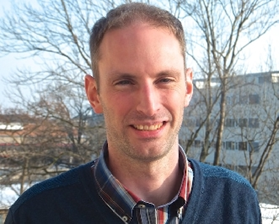邀请讲座人:Vandewal Koen
简介:Prof. Dr. Koen Vandewal (23-06-1981) obtained his PhD in Physics at Hasselt University in 2009 under the supervision of Prof. Dr. Jean V. Manca, working on the physics of organic photovoltaics. After that, he has been working for two years as a Postdoctoral Fellow at Linkoping University in Sweden and another two years at Stanford University in the US. From 2014 - 2018, he held an endowed professor position at the Technische Universitaet (TU) Dresden in Germany. In 2018, he took up a professor position at Hasselt University, where his is leading a research group which aims to solve fundamental questions in the field of organic and molecular electronics with relevance to applications in opto-electronic devices such as organic light-emitting diodes, organic solar cells and sensors. In the organic electronics community he is best known for his seminal work on charge-transfer states at organic interfaces and their role in photovoltaic devices.

【报告主题】Inter-molecular charge-transfer states for organic opto-electronics
时间:2019年9月12日 下午4:00
地点:仲英楼 材料学院 第一会议室
摘要:Charge transfer (CT) states at the interface between electron-donating and electron-accepting (A) materials in organic thin films are characterized by absorption and emission bands within the optical gap of the interfacing materials. Depending on the used donor and acceptor materials, CT states can be very emissive, or generate free carriers at high yield. The former can result in rather efficient organic light emitting diodes (OLED), via thermally activated delayed fluorescence, while the latter property is exploited in organic photovoltaic (OPV) devices and photodetectors. In this talk, I will discuss the fundamental properties of CT states and link them to device performance. Furthermore, I will introduce a new device concept, using optical cavity resonance effect to boost CT absorption at photon energies below the optical gap of both donor and acceptor, enabling narrow-band, near infrared (NIR) photo-detection, as well as reduced energy losses in OPV devices.